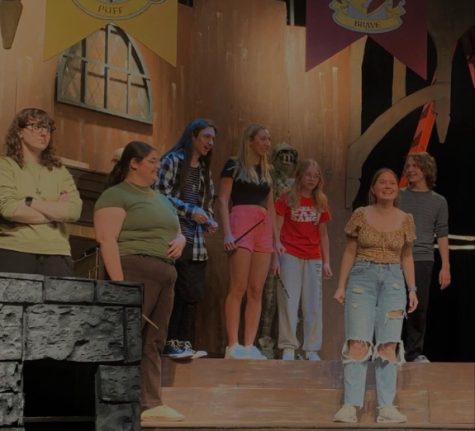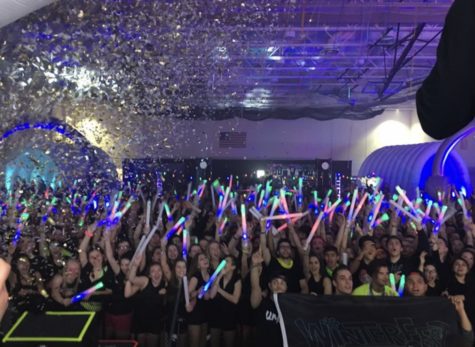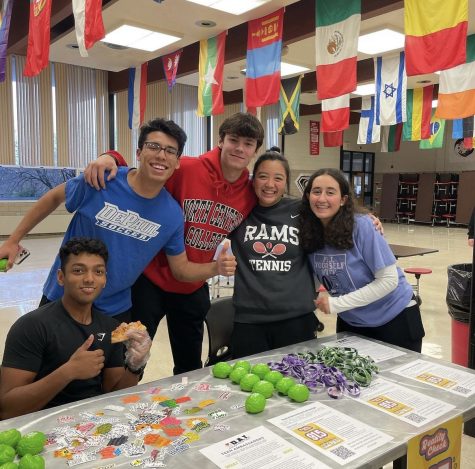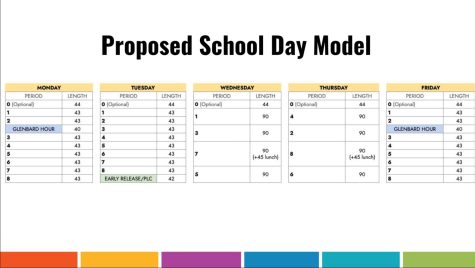E-learning: teacher and student perspectives
Photo credit Kelly Sikkema (Unsplash)
Students across Illinois have been engaging in remote learning, or E-learning since the middle of March, but the process has evolved.
The current system implemented on April 13, was based, in part, on feedback from a student opinion survey.
According to Melissa Creech, Director of Instructional Technology, many students requested the new schedule and the weekly check-in times with teachers.
Sukaina Kazmi, freshman, says she prefers the old E-learning schedule, because it was easier to keep track of assignments, and was “more similar to regular school.”
On the other hand, junior Faria Ansari prefers the blocked schedule because the older schedule was too much work everyday. She feels that it was “kind of absurd” that there was work assigned for six or seven classes every day.
“I know a lot of people who got unmotivated right away,” she said. “Now it’s more manageable.”
Joshua Adler, PE teacher and Boys Soccer Coach, said that participation in his classes was higher before spring break, but “definitely declined” after the policy changes to E-learning.
Ms. Creech says students appreciated the “flexibility” that E-learning provides and help from their teachers.
Patris Haxhiaj, junior, agrees that E-learning “has its convenience,” as students can do the work whenever it suits them. However, it is still not the optimal learning experience, because “students are missing out on a lot of valuable instructional time with their teachers.”
Beyond missing class time, having to do the work at home has other downsides.
“You can get easily distracted at home and sometimes you won’t put as much effort in your work as you would in the classroom,” says senior Melissa Castillejo.
Being at home also means students might have to teach themselves. Erika Hasanaj, senior, says this can be difficult, and could be one reason why some students do not have the motivation to learn.
Covid-19 has impacted the end of the school year, and many students, especially seniors, feel the impact of something they had previously taken for granted.
“I really miss going to school and actually learning. I miss seeing all of my friends, peers, and teachers everyday,” says Hasanaj. “It’s very difficult for students to complete their work during a time like this.”
E-learning is also affecting the way that students and teachers collaborate.
Melissa Sabol, AP Biology teacher, said E-learning is tough for both students and teachers because the “personal component” is missing. She also also said she believes that it is more difficult to learn without the hands-on lab science.
“The excitement and curiosity in science is not teachable through E-learning,” she said.
Hasanaj said she misses doing labs in AP Biology and says that it can be “really difficult” to learn the material online.
A controversial component of E-learning is the fact that grades can no longer go down. Kazmi believes this reduces a lot of stress from E-learning.
Ansari says she picks and chooses the work she does. Shs said she avoids “busy work,” like unnecessary worksheets or projects, and instead focuses on work in her AP classes that will help her for the upcoming AP Exams.
Sabol says students all have different home lives. She believes the state board of education took this into consideration.
“The expectation is that students will do what they can, and I think that is fair,” she said.
Despite the grading guidelines, Sabol said that in her AP Biology class, almost all of the students are completing the work, regardless of it being optional.
Karen Beardsley, Honors Biology and AP Seminar teacher, said that about 50% of her Honors Biology freshman students are completing the work, yet “many hand in late work.” Her AP Seminar class participation, consisting of mostly upperclassmen, has been “steady.”
On the other hand, Mr. Adler said his freshman and sophomore classes are doing the most work and his junior and senior classes “struggle” the most. On average, around 33%-50% of his students complete their work weekly.
One of the struggles with E-learning is finding the motivation to do it. Hasanaj says going to Google Hangouts or FaceTiming friends have helped her keep up with her work.
Castillejo motivates herself with “the thought of graduating soon. I’ve worked so hard for almost four years, why stop now? I want to finish strong.”
These are confusing and scary times, and we don’t know when it will all end.
“It is important to maintain an optimistic outlook with E-learning and school,” says Hasanaj. This time can be seen as an opportunity to “to pick up a new hobby, catch up on sleep, or hang out with your family.”
I am a senior and this is my first year working with newspaper. I am one of the News Editors. I am also involved in math team, key club, and Argonne research....













